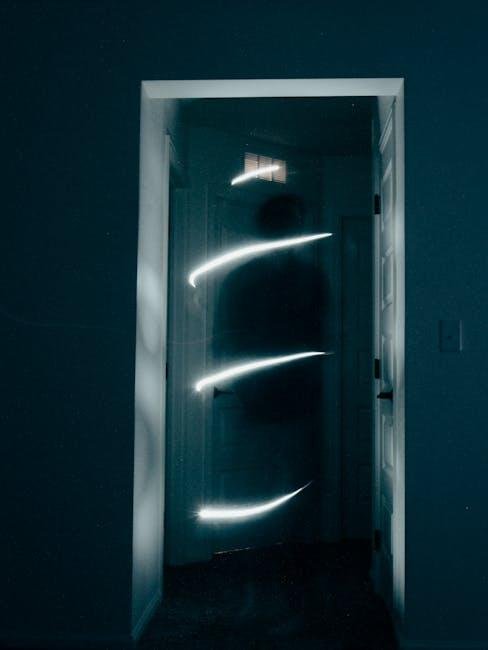In the ever-evolving landscape of workspaces, the interplay of light has emerged as a silent yet powerful determinant of productivity. Imagine stepping into a room bathed in golden sunlight, where each corner radiates warmth and clarity, compelling you to seize the day. Now picture the opposite — a dimly lit surroundings, where shadows dance upon the walls and motivation begins to wane.As we navigate the spectrum of brightness in our surroundings, the question arises: how do we strike the right balance for optimal productivity? This article delves into the nuanced relationship between light, focus, and efficiency, exploring how both radiant and dim environments can shape our work habits and mental clarity. Join us on this enlightening journey towards understanding the significance of illumination in our daily lives, and discover how to create the perfect ambiance that fuels your creativity and drives your success.
The Science of Light: Understanding Its Impact on Focus and Creativity
Light plays a crucial role in our daily lives, influencing not only our mood but also our cognitive functions such as focus and creativity. Studies indicate that exposure to bright light can enhance alertness and improve concentration, making it beneficial for tasks that require sustained attention. On the other hand, dim light tends to create a softer atmosphere that can foster creativity and relaxed thinking, allowing for the free flow of ideas. However, it is essential to find the right balance between these two extremes to optimize productivity.
To further understand how light affects our work environment, consider the following factors:
- Type of Activity: Bright light is ideal for analytical tasks while softer light can boost brainstorming sessions.
- Color Temperature: Cooler, bluish lights can stimulate focus, whereas warmer lights can create comfort.
- Time of Day: Mimicking natural light patterns can definitely help regulate our biological clock and enhance overall productivity.
| Light type | Effects on Focus | Effects on Creativity |
|---|---|---|
| Bright Light | Increases Alertness | May Decrease Free Thinking |
| Dim Light | Reduces Distractions | Encourages Idea Generation |

Adjusting Your Environment: Techniques to Optimize Natural and Artificial Lighting
Creating the ideal workspace involves more than just the right desk or comfortable chair; the lighting plays a crucial role in setting the mood and boosting productivity. Natural light is frequently enough the most beneficial, illuminating spaces in a way that enhances focus and reduces eye strain. To optimize natural light, consider the following techniques:
- Position your desk: Place your workstation near windows to maximize exposure to daylight.
- Use light-reflecting surfaces: Incorporate mirrors and light-colored walls to bounce light throughout the room.
- Control glare: Utilize sheer curtains to diffuse harsh sunlight while still enjoying brightness.
Artificial lighting is equally important, especially during evening hours or in rooms lacking natural light. A well-lit environment can enhance alertness and minimize fatigue, so it’s essential to strike a balance. here are strategies for effective artificial lighting:
- Layer your lighting: combine ambient, task, and accent lighting to create a versatile atmosphere.
- Adjust the color temperature: Select bulbs that mimic daylight (5000-6500K) for a fresh, vibrant feel or softer (2700-3000K) lights for a calming effect.
- Maintain consistency: Use similar lighting types to avoid visual interruptions, which can be distracting.

Color Temperature and Productivity: Choosing the Right Spectrum for Your Work
The color temperature of lighting plays a critical role in shaping the ambiance of a workspace,which in turn affects productivity. Typically measured in Kelvin (K), the spectrum of light influences mood, alertness, and focus.As an example, lighting that falls in the 5000K to 6500K range is often seen as ideal for tasks requiring concentration. It imitates daylight, creating an energizing environment that can help stave off fatigue. on the other hand,softer lights below 3000K can promote relaxation and creativity but may not be suitable for detailed,high-focus tasks.
When designing a workspace, it’s essential to strike a balance between bright and dim lighting. Consider the following factors when selecting the right spectrum:
- Task Type: Identify whether the primary activities demand high concentration or creative thinking.
- Time of Day: Natural light varies throughout the day; adjust your lighting accordingly.
- Personal Preference: Individual responses to lighting can differ; involve team members in the selection process.
To further understand the impact of color temperature on productivity, a comparison table can definitely help visualize the effects:
| Color Temperature (K) | Effects on Productivity | Best Use Cases |
|---|---|---|
| 2700K – 3000K | Relaxing, comfortable | Living rooms, creative spaces |
| 4000K – 5000K | Neutral, promotes focus | Office spaces, learning environments |
| 5000K – 6500K | Energizing, improves alertness | Workshops, design studios |

Individual Preferences: Tailoring Brightness Levels for Maximum Efficiency
In the realm of productivity, the ideal brightness level can vary substantially from one individual to another. Personal preferences can be influenced by factors such as age, eye sensitivity, and even the nature of tasks at hand. Some may thrive in a brightly lit environment that energizes their focus, while others may find a softer glow more conducive to a tranquil workflow. Understanding these differences is crucial to creating an optimal workspace. Here are a few factors to consider:
- Task type: Creative tasks may benefit from softer lighting, while analytical tasks might require a brighter setup.
- Time of Day: Morning hours may call for increased brightness to combat fatigue, whereas evening work coudl necessitate dimmer lights.
- Personal Comfort: Individuals wiht sensitive eyes might prefer lower brightness levels to reduce strain and improve concentration.
To further personalize brightness settings, consider implementing adjustable lighting solutions. Dimmable lights and smart bulbs can provide users with the ability to tailor their workspace according to their needs instantly. Additionally,keep in mind the color temperature of the light,as cooler tones generally enhance alertness,while warmer tones can create a more relaxed atmosphere.below is a simple table illustrating the effects of varying brightness levels:
| Brightness Level | Effect on Mood | Ideal Use |
|---|---|---|
| Low (200-300 lux) | Relaxed | Reading, unwinding |
| Medium (300-500 lux) | Focused | General tasks, studying |
| High (500-800 lux) | Alert | High-concentration work, detailed tasks |
Key Takeaways
the delicate dance between brightness and dimness is not just about illumination; it’s about creating an environment conducive to our unique rhythms of productivity. Each individual responds differently to light, and the journey to find the perfect balance often involves a bit of experimentation. As you navigate your own workspace, consider how the spectrum of light influences your mood, focus, and creativity. By tailoring your environment to meet your specific needs, you can harness the power of light to foster not only productivity but also well-being. So, as you flip the switch between bright and dim, remember that the right balance is not merely a matter of preference—it’s a pathway to unlocking your fullest potential. Let the light guide you.


